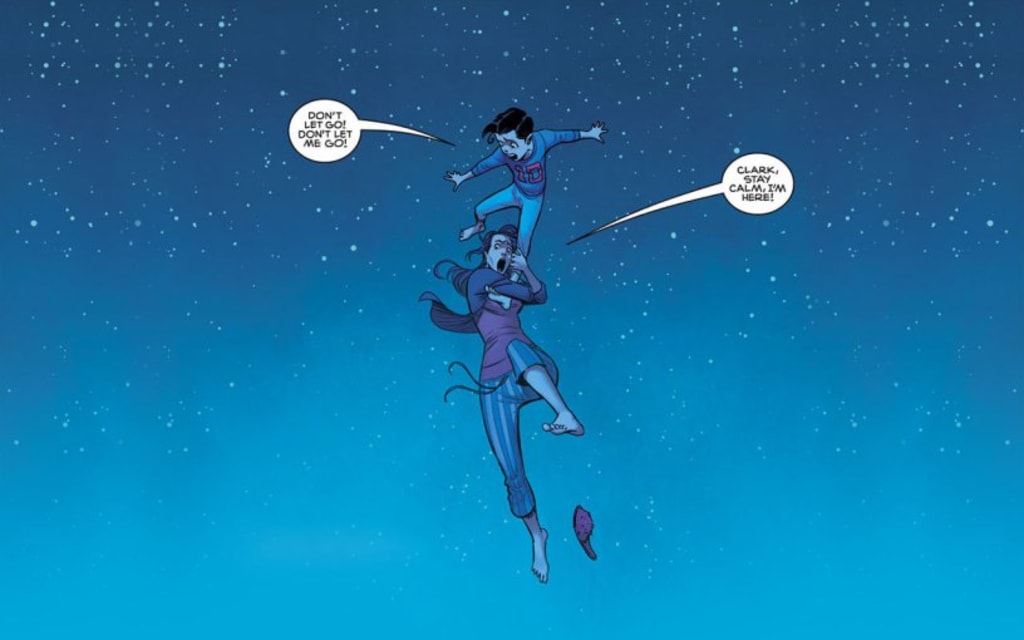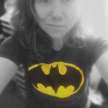Superman: Evolution of Power
How can we relate to a God...?

Created at the hands of Jerry Siegel and Joe Shuster. Superman is the quintessential superhero. The one that started the entire genre, inspired by circus strongmen and the fantasies of outsiders. Heroes that came afterward would leave a mark in their own way, but only one was Superman. Many would not only carry the idea of Superman, but would take on a name of and attributes from a second source, in the case of Batman, he would take the form of a Bat and strike fear in the hearts of his enemies, “for Superman, the name and costume both contribute to the impression of him as “super” – a mighty Other.” [Brownie, Graydon. 2015:12] But the Superman introduced in Action Comics #1 1938, differs greatly from the Superman we have come to know and love now.
When Superman was created, he was envisioned to be the fantasy of many. While Clark Kent is viewed as mild mannered and weak, Superman is a hero to the world, a source of hope and strength. They are one and the same, providing hope for even those that are looked down upon, that they can be strong. Clark Kent, is shown as an outsider, a being from another world living among us and using his gifts to help the people of the world he has called his home. Superman’s powers when created, are an extension of those displayed by circus strongmen. At the time of his first appearance, Superman’s only abilities were to “Leap 1/8th of a mile; hurdle a twenty story building, raise tremendous weights, run faster than an express train, and that nothing less than a bursting shell could penetrate his skin!” [Siegel. Shuster.1938:2]. Compared to Superman’s modern skill set, ” It’s surprisingly grounded.” [Whitbrook.2015]
Over time, more powers and abilities were added depending on the writer or situation. Including traits that we now naturally associate with Superman, including Flight, Heat Vision, Super Breath and X-Ray Vision. By the 80’s, so many one off powers, such as Super-ventriloquism, Super-Mathematics and the ability to shoot tiny versions of himself out of his hands, were introduced. The problem this created was that Superman had ” Too many powers, and not enough flaws” leaving Superman a shell of his former self and ” one that was difficult to write challenging, engaging stories for ” [Whitbrook.2015]. With the ‘Crisis on Infinite Earths’ event, many of Superman’s more outrageous abilities were dismissed to form a more definitive power set. Even after his death and return in 1993, no major abilities were introduced until 2015’s Superman #38, with the addition of the ‘Super-Flare’ ability. What we now consider Superman’s definitive power set, all have a basis on his Kryptonian physiology and its reaction to Earths yellow Sun. Once his abilities were grounded in this foundation, the ability to humanise the character became a lot more forthright.
Despite his origin story being retold multiple times, a larger focus in the last few years has been on a young Clark having to learn to not only control his abilities, but to deal with the alienation that this would cause with the general public. The exploration of a young Clark and the alienation that he feels, somewhat mirrors how the public felt about the multitude of outrageous and ridiculous powers forced upon the character in the 50’s through 80’s. One of the most interesting explorations of this, is in 2016’s ‘Superman: American Alien’.
During the first issue, Clark is frequently woken due to his inability to control his power of flight. While this drives the story, the crux takes place while watching a Sci-Fi movie with his friends and becoming uncomfortable by the depiction of government soldiers capturing an alien. For a brief moment, Clark loses control and momentarily flies and crashes to the ground. Angry with himself, he hides in the bathroom and sees in the mirror, the alien from the film in his reflection, leading to the destruction of both the mirror and the wall. Clark displays his fear and disgust at what he is, “Dad.. I’m so unhappy. I wanted to be myself, I don’t want to worry that I’m some-thing else. I’m scared – I just want to be normal. I’m not normal.” [Landis, 2016:15]. By the end of the issue, Clark begins to grasp his abilities and is reminded by his father that “Who needs normal? Maybe weird is better.” [Landis, 2016:15]. In later issues, a teenage Clark would even begins to use his powers to help those around him in ways the police can’t hope to achieve. Post action, Clark is confronted by his mother about the dangers of his actions to only break down in a genuinely tender moment. ” I had a whole speech planned out. I was really gonna get into it with you. But I already put my foot in my mouth, Didn’t I? Because Now.. Now … I Can’t … I Can’t stop thinking about what would have happened to that family if you hadn’t been there..” [Landis, 2016:29]
When Superman was created, he was imagined as the ultimate strongman, An other in the eyes of man and a hero beyond human limits. The explorations of this concept for the young Clark, provide more humanity to a character that, by all rights should be hard to emphasis with. Showing both Superman and Clark in these more human moments, prove just how relatable he can be. Despite having powers comparable to a god, Superman embodies the best of humanity.
- Brownie, B. Graydon, D. (2015) The Superhero Costume. Identity and Disguise in Fact and Fiction. Bloomsbury Academic. London.
- Johns, G. Romita Jr., J. (2015) Superman #38: The Men of Tomorrow, Chapter Seven: Friends and Enemies. DC Comics. New York.
- Johns, G. Frank, G. (2010) Superman: Secret Origin. DC Comics. New York.
- Jurgens, D. Breeding, B. (1993) Superman #75: The Death of Superman. DC Comics. New York.
- Kakalios, J. (2009) The Physics of Super Heroes. Duckworth Overlook. London.
- Landis, M. Dragotta, N. (2016) Superman: American Alien #1: Dove. DC Comics: New York.
- Landis, M. Edwards, T. (2016) Superman: American Alien #2: Hawk. DC Comics. New York.
- Romita Jr., J. (2015) Superman #40: Powerless. DC Comics. Burbank.
- Siegel, J. Shuster, J. (1938) Action Comics #1. National Comics. New York.
- Straczynski, J. Davis, S. (2010) Superman: Earth One, Book One. DC Comics. New York.
- Taschen. (2015) The Little Book of Superman. Koln. Taschen.
- Waid, M. Yu, L. (2004) Superman: Birthright. DC Comics. New York.
- Whitbrook, J. (2015) The History Behind Superman’s Ever-Changing Superpowers. [Online] i09. 2nd September. Available from: http://io9.gizmodo.com/the-history-behind-supermans-ever-changing-superpowers-1684736603
About the Creator
Mikayla J. Laird
Passionate life long film and comic fan. Firm believer in using entertainment to educate. Part-time lecturer.
https://www.facebook.com/MikaylaJLaird/






Comments
There are no comments for this story
Be the first to respond and start the conversation.